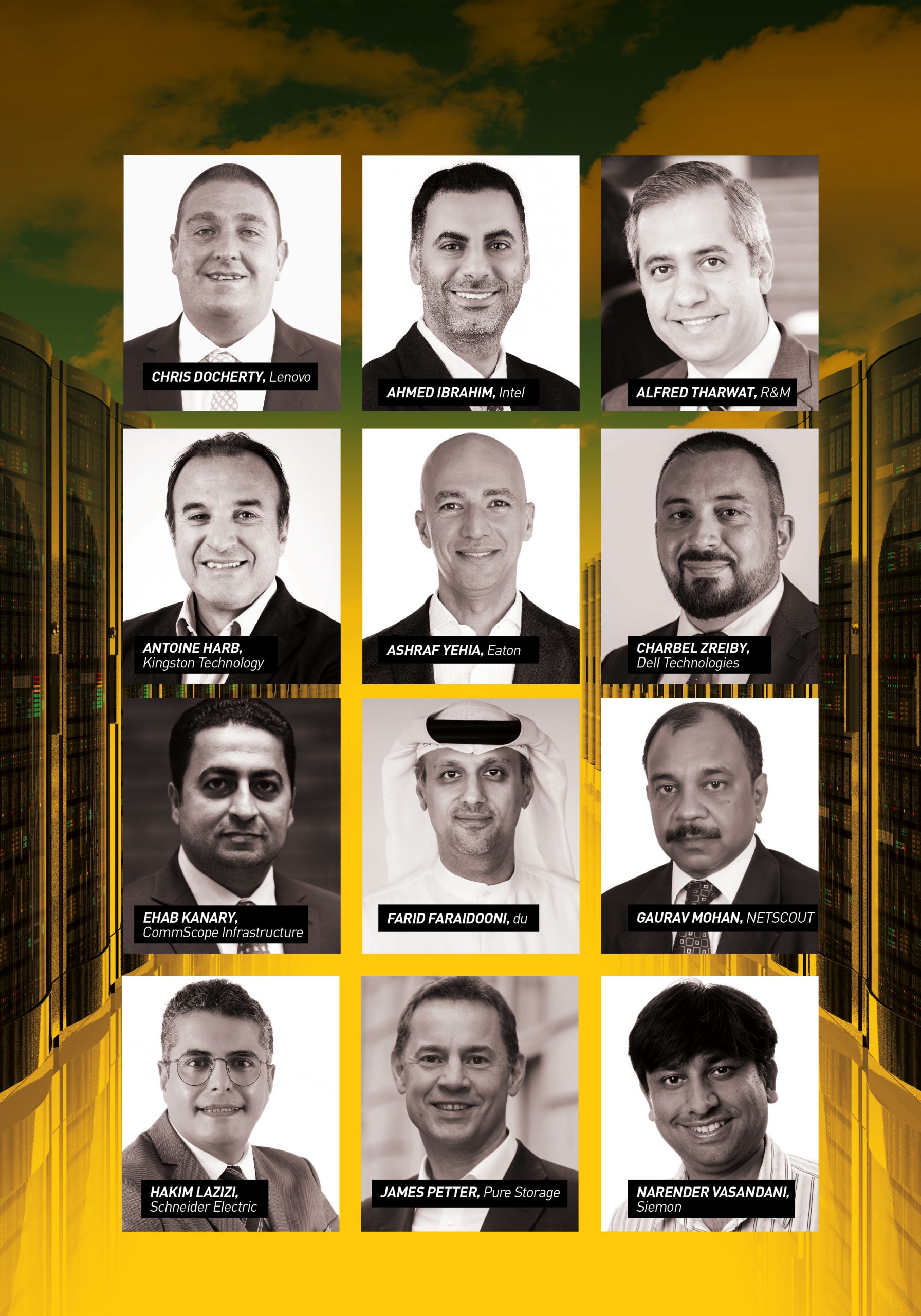Since data resides in the datacentre, the datacentre continues to be the centre of the digital universe. With workloads and storage of data growing exponentially, managing the capacity and infrastructure of a datacentre is one such challenge. Another challenge is the growing importance of the cloud and edge of the network as repositories of data, traffic and devices. This is driving the transformation of the datacentre requiring a different stack of technologies and platforms to support these additional forms of the datacentre.
Intel is now building next generation of processors for cloud-ready datacentres. Says Intel’s Ahmed Ibrahim at Intel, the 3rd Gen Xeon Scalable platform is designed to handle workloads from cloud to network to edge and provide benefits across a range of customer use cases. More and more on-premises datacentres are transforming to cloud-based and hybrid datacentres, and with this the ever-increasing data volume poses a challenge in data protection. It is critical new datacentre technologies come with robust security solutions.
Intel’s 3rd Gen Intel Xeon Scalable processor comes with built-in Intel SGX which protects code and data with the smallest attack surface. Intel’s 3rd Gen Intel Xeon Scalable processor is the only datacentre processor with built-In AI, and delivers on average 46% increased performance for workloads.
Datacentre migration from conventional to cloud-based has become a priority for organisations. Despite adoption of new datacentre technologies, the migration process is one of the biggest challenges, points out Intel’s Ibrahim. Lack of skills to handle complexities poses a challenge when migrating from a traditional datacentre to a virtual platform.
To boost and streamline industry innovation, Intel has announced the official launch of the new Intel Partner Alliance. Intel Partner Alliance unifies longstanding Intel partner programs, such as Intel Technology Provider, Intel IOT Solutions Alliance and Intel Cloud Insider, into a single, full partner ecosystem.
Decentralisation and hybrid approach
The move towards decentralisation of datacentres is driven by new business needs to accommodate digital landscape and proliferation of IoT says Charbel Zreiby Director at Dell Technologies. 75% of enterprise data will be processed outside a traditional centralised datacentre or cloud by 2025. Edge datacentres and network topologies, such as spine-leaf architectures, have emerged allowing for lower data latencies.
It is an interesting time to see how these conditions are challenging CIOs to rethink the role of the datacentre. Organisations are opting for automation to monitor, manage and maintain the routine processes and workflows of datacentres. Datacentre monitoring and maintenance, especially storage infrastructure is becoming more distributed and scaled out.
Along the same lines, Chris Docherty at Lenovo says datacentres infrastructure will need to transform to be future ready. Organisations are mixing cloud, edge, on-premises computing in hybrid environments, and focusing on the demands of specific workloads resulting in complexity.
Transformation in datacentres is based on the need to adjust data infrastructure to meet increasingly complex requirements. Data infrastructure requires flexibility to scale, to move workloads to the right platform, and reduce complexity. CIOs need to be aware of fundamental shifts for example proliferation of connected devices outside of traditional datacentres and data governance and legislation effects where data can and cannot be stored, which has necessitated the shift to a hybrid cloud.
The corporate datacentre is still an essential component but demands on the infrastructure have changed dramatically. Creating a transformation plan and an infrastructure strategy that is future proofed against these changes is the challenge, points out Docherty.
Transformation of work is also driving datacentre transformation. With changes in the world of work, datacentre transformation has become more critical than ever while networks remain overburdened with flood of data, indicates Gaurav Mohan at NETSCOUT. The goal is speed, agility, convenience, cost-effectiveness.
Networks are overburdened as a new flood of data from IoT devices begins streaming in from every corner. One challenge for businesses is migrating data across various cloud environments, private, public, hybrid. As data is dispersed across complex environments, gaining visibility into storage has become increasingly difficult. Data access is the lifeblood of the digital enterprise
Infrastructure complexity, cloud visibility silos, application dependencies, make it hard to deliver a consistent user experience
Listing the challenges, Mohan says, supporting a seamless datacentre operation with time constraints, limited resources, lack of system-wide visibility is nearly impossible.
Sustainability
Adding intelligence and making the datacentre’s energy assets sustainable for the future demand and supply ecosystem is an approach recommended by Eaton. Ashraf Yehia at Eaton asks whether the UPS of an enterprise datacentre is ready for micro-grid services of the future. Operators in large datacentres have the opportunity to transform their UPS into a profit center, supporting the grid as a distributed energy resource.
UPS’ have the capability to deliver dual benefits — transforming from a load on the grid to a value-generating asset. Large-scale datacentres have deployed battery banks to provide adequate backup in the event of a blackout. The reality is batteries sit unused vast majority of the time because power outages occur infrequently. UPS’ can help organisations optimise energy costs and generate additional revenue as markets open up for grid services
Opportunities include providing peak shaving to help avoid or reduce demand charges, shifting energy consumption for time-of-use rate optimisation, and providing frequency regulation to help grid operators meet explosive growth demands. Energy aware technology also enhances faster adoption of renewable energy into the power grid improving sustainability.
Making the datacentre more sustainable is increasingly an expectation going forward. And sustainability is becoming differentiator for datacentres, says Hakim Lazizi at Schneider Electric. In a survey, 57% view sustainability as a competitive differentiator but only 43% said they have strategic sustainability initiatives in place for their infrastructure.
Usually, datacentre managers find themselves running a datacentre they had no part in designing. Some say that a datacentre becomes obsolete the day it is built and commissioned. Common issues that need to be resolved include lack of space, inefficient cooling, power infrastructure not flexible enough. There are 650,000+ members in Schneider Electric’s open-partner ecosystem.
Flash storage vendor, Pure Storage, has the vision of an all-flash datacentre. The all-flash datacentre is coming true and sounding the death knell for spinning disk and hybrid, while another advantage is reduction in power, space, cooling costs, says James Petter at Pure Storage.
To make this happen, Pure Storage is working with its innovative Technology Alliance Partners. FlashBlade is industry’s advanced all-flash storage solution for consolidating fast file and object data. Cisco and Pure brought FlashStack converged infrastructure to market. AWS works with Pure Storage to provide data management solutions and hybrid applications.

Innovating infrastructure
Industry vendors are also working on developing networking infrastructure for these hybrid datacentres. Datacentres are moving into the cloud, which is adding demand and complexity into security, rollout speeds, monitoring, data availability, expertise. R&M’s Alfred Tharwat, remarks that data growth is boosting demand in the areas of energy management and operational efficiencies. Migration to 100, 200, 400 Gbit per sec is ongoing which requires ultra-high-density cabling solutions and DCIM.
R&M has introduced inteliPhy net 3.0 software for Datacentre Infrastructure Management. inteliPhy net 3.0 incorporates simplifying datacentre design, planning, management with a centralised dashboard. With the new 48 port panel, fiber optic and copper cabling can be accommodated within a single height unit saving half the rack space traditionally required for a combination of both media
The industry’s preoccupation with the network edge due to remote working is also moving the target away from 5G, feels Antoine Harb, Team Leader, Middle East and North Africa, Kingston Technology. Globally we are pushing data, application, network access to the edge, what will happen with the explosion of ultra-fast 5G connectivity, smart factories, he queries?
Also, with home working being accepted as normal business function it seems essential to create micro datacentres to cater for localised growth. Customers are more likely to build a storage solution that will meet both present and future needs while increasing ROI and lowering TCO.
As a networking solutions vendor for service providers, Commscope points to the challenge of growing network complexity and the requirement to reduce latency. The volume of digital traffic pouring into the datacentre continues to climb, while a new generation of applications is driving latency requirements lower, says Ehab Kanary from CommScope. To help enterprises navigate the multi-tenant datacentre space, CommScope developed the Multi-Tenant Data Centre Alliance programme.
If the rate of technology acceleration is any indication of what lies ahead, enterprise datacentres better strap in. With switches and servers on schedule to require 400G and 800G connections, the physical layer must continuously optimise network capacity. A new generation of applications driven by advancements like 5G, AI is driving latency requirements into the single millisecond range.
Industry partnerships are also important to support datacentre transformation. New technologies are improving virtualisation, cloud solutions are eliminating security concerns, optical transport networks are creating low latency, indicates Farid Faraidooni at du.
Optical Transport Networks are ensuring solutions are more efficient than ever before backed by low latency. Scaling out processes cannot be successful without ensuring data protection against emerging threats. Another key challenge in terms of solutions’ innovation is ensuring continuous real-time data monitoring. Data traffic and demands, power usage, and cooling must always be recorded in real-time.
Siemon is also preparing infrastructure solutions for next capacity datacentres. As high-density, high-capacity datacentres migrate to higher speeds, they require low loss fibre connectivity to support multiple networks over a range of configurations, says Narender Vasandani at Siemon.
MPO-MTP technology makes it easier, cost-effective, less complex to deploy high-capacity backbone fibre links. Edge datacentres have emerged to reduce the distances between end users, devices, IT resources. Edge facilities must support large volumes, at high speeds, greater number of connections, much smaller space.
In summary, a combination of new computing and networking technologies, planning for new use cases and business growth, forward looking strategies, and planning for sustainability, can help datacentres grow in the right direction and become future ready.
The centre of the storm – datacentre is being challenged in all directions by growing application workloads, increasing demand for storage, decentralisation into the edge and hybrid cloud, and growing expectations of sustainability. Top executives from the industry share their points of view.

























